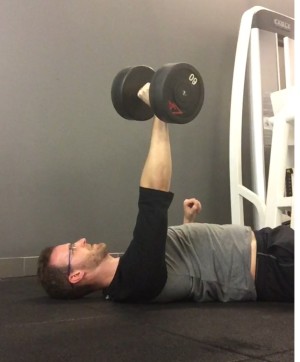Boxing is a popular form of exercise and can be a very challenging cardiovascular and muscular endurance activity. Unfortunately, it is sometimes simply thrown into a routine for fun, without being connected to an overall program. What we want, is to take a couple of fundamental principles from boxing that integrate beautifully into a larger, general fitness picture and apply them smartly to help you raise your game.
Up front disclosure, I am not a professional boxer nor do I know the ins and outs of expert punching technique, but the average exerciser probably doesn’t need to know all that either. We’re going to have a look instead at how a couple of basic points can be universally applied to your exercise routine.
HIPS, CORE, AND FORCE PRODUCTION
A common misconception about punching is that it is driven by upper body strength. I often see people slugging away at a punching bag or their trainer with flailing arms until their upper body is exhausted, their arms hanging like wet noodles by their sides. Boxing should be about the hips and core; the arms should be a secondary training target.
Force is generated from the ground up, making the legs and the hips the most important force generators in the body. Force also requires a stable base to be transferred effectively, making the core the second most important piece of the puzzle. To be good at boxing, one needs to have good lower body athleticism, including lower body mobility, strength, power as well as solid core stability. Knowing this does most of our program design for us. We want to do workouts that will help us develop each of these points.
Very generically put together, a list of exercises for lower body mobility, strength, and power as well as core stability would be:
Mobility work – 2 to 3 exercises
Example: Kneeling ankle dorsiflexion, hip hinge, bodyweight lateral squat
Lower Body Strength – 1 exercise
Example: Front loaded squat
Lower Body Power – 1 exercise
Example: Kettlebell swing
Core – 2-3 exercises
Example: rotating plank, renegade row, ViPR Chop
FLEXIBILITY
Boxing is a repetitive activity. You will throw hundreds of punches doing it and spend prolonged amounts of time in a certain position, namely, “the fighter’s stance.” You will have your hands up in front of your face for defense, and, if you have a good instructor you will be told ad-nauseam to keep them there. This will pull your shoulders forward along with your head and neck as you duck behind your fists. This prolonged positioning is remarkably similar to the position you take hunched over a computer at work. The short version of all of this is that you’ll be pretty tight in your anterior shoulders and pecs, and you’ll be a bit weak and tense on the back of your neck and around your shoulder blades – all rather uncomfortable. While we are mentioning sitting at a desk, this daily activity will also be contributing to some hip and leg tightness as well. WIth all this in mind, we definitely want to emphasize some stretches for these areas:
Stretching – 10 minutes
Pecs
Anterior Shoulders
Hip Flexor
Adductors
Hamstrings
ACCESSORY EXERCISES
Finally, as I mentioned, because the front side of your body will be getting worked pretty hard throwing punches and maintaining that protective stance, you will want to spend whatever remaining workout time you have focusing on some upper back exercises. This will help to restore balance to the upper body, hitting the muscles that are neglected by the inherent characteristics of boxing. That means:
Back – 2-3 exercises
Example: Angled Pull Down, Row, Reverse Fly
Ok, if we put everything we have now outlined into a day’s workout that will raise your general fitness while also contributing to better boxing, it looks something like this.
WORKOUT SINGLE DAY
Mobility work – 2 to 3 exercises
Example: kneeling ankle dorsiflexion, hip hinge, bodyweight lateral squat
Lower Body Strength – 1 exercise
Example: Front Loaded Squat
Lower Body Power – 1 exercise
Example: Kettlebell Swing
Back – 2-3 exercises
Example: Angled Pull Down, Row, Reverse Fly
Core – 2-3 exercises
Example: rotating plank, renegade row, ViPR Chop
Stretching – 10 minutes
Pecs
Anterior Shoulders
Hip Flexor
Adductors
Hamstrings
CONCLUSION
The point here is that we have developed a list of exercises that reflect the needs we have identified for boxing. Nothing is randomly chosen which ensures that none of it is wasted effort. The idea is that the two activities, strength training and boxing, reinforce each other. Too often, exercise is chosen mostly at random, based on whatever the individual finds interesting or exciting at the time, which is also how many people end up boxing. I hope that this example of thinking about training, which could be applied to any sport or activity, gives you a glimpse at a little bit better way. Have fun, but work smart!
Related Articles:


